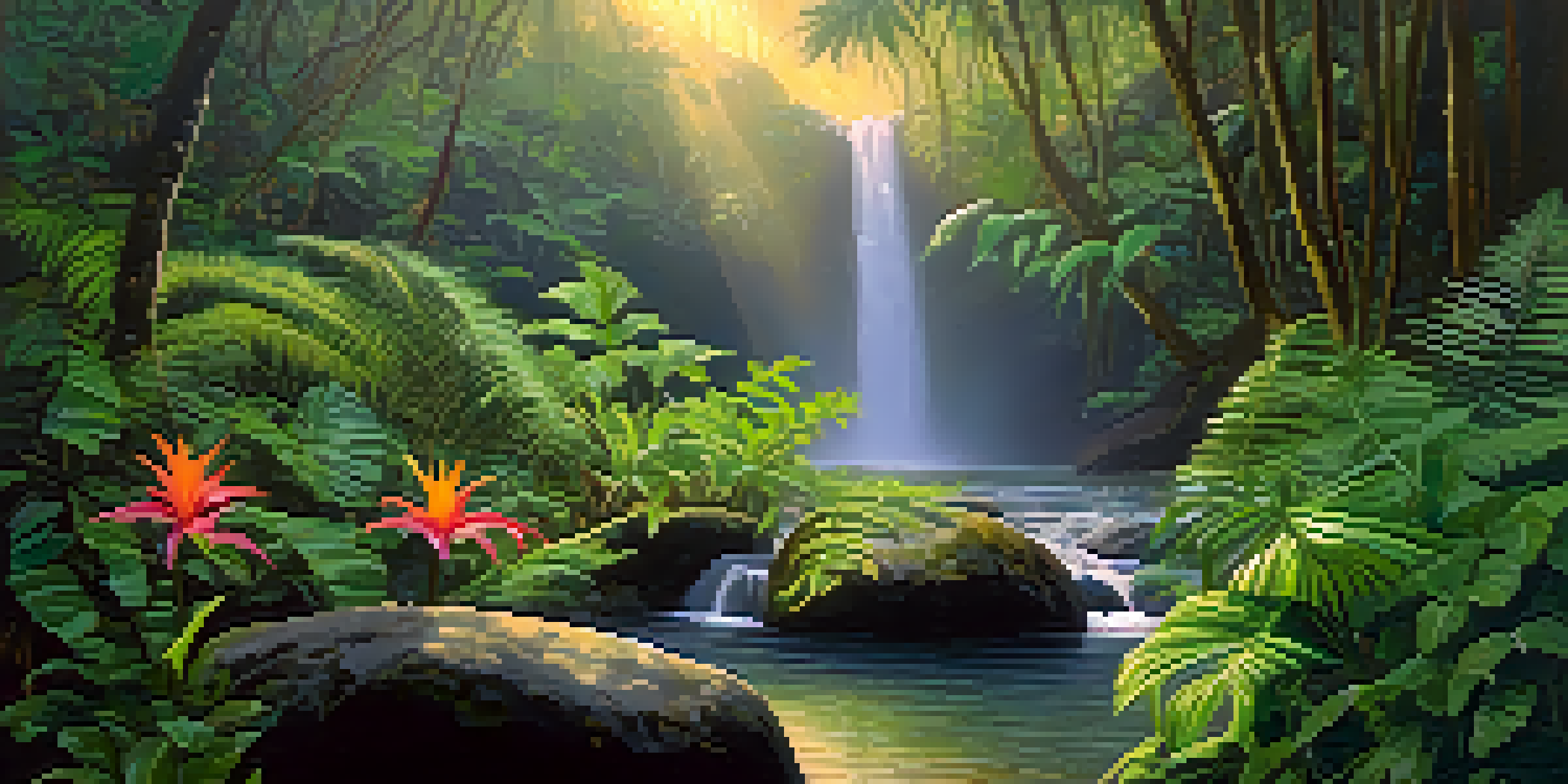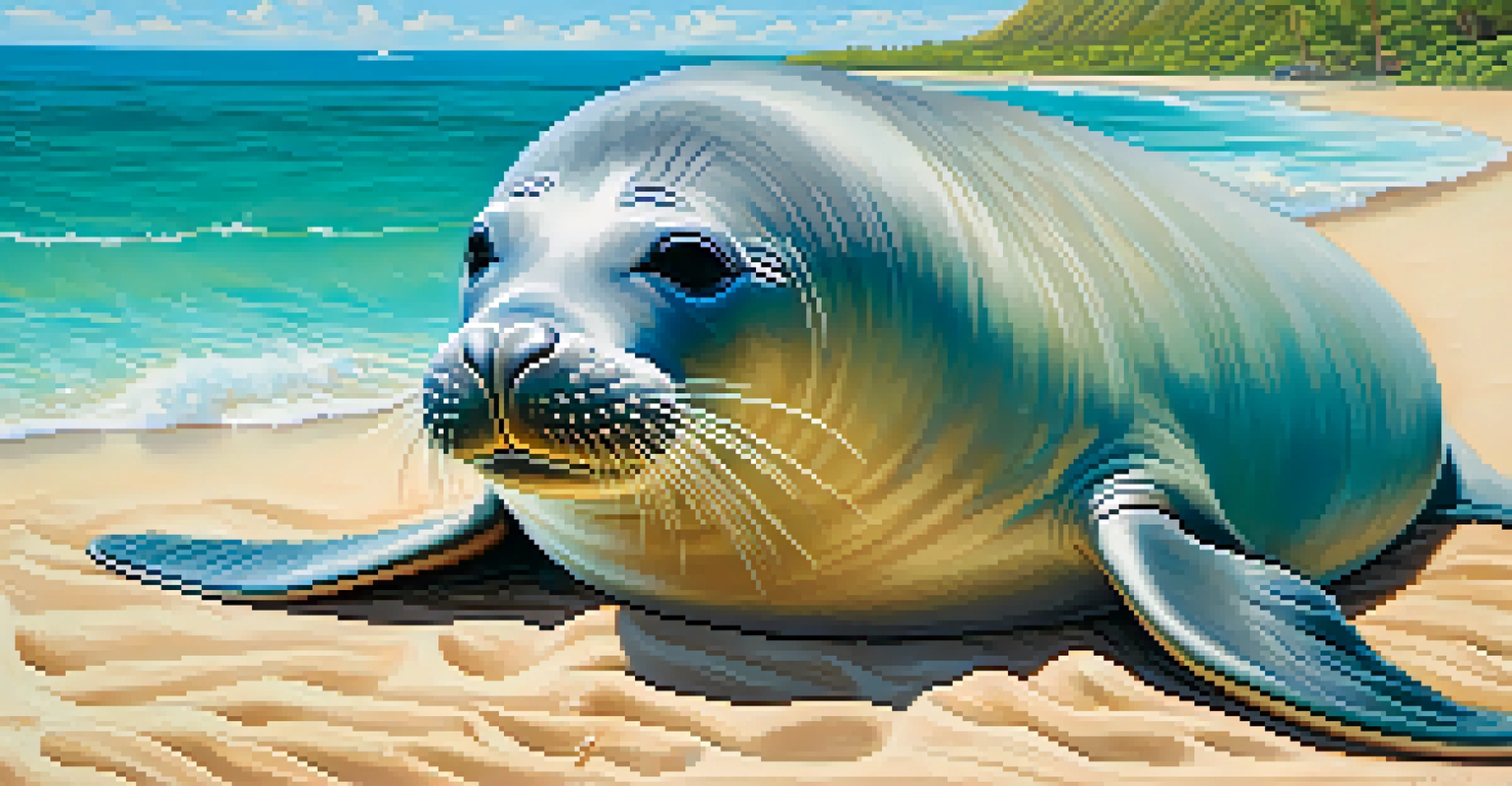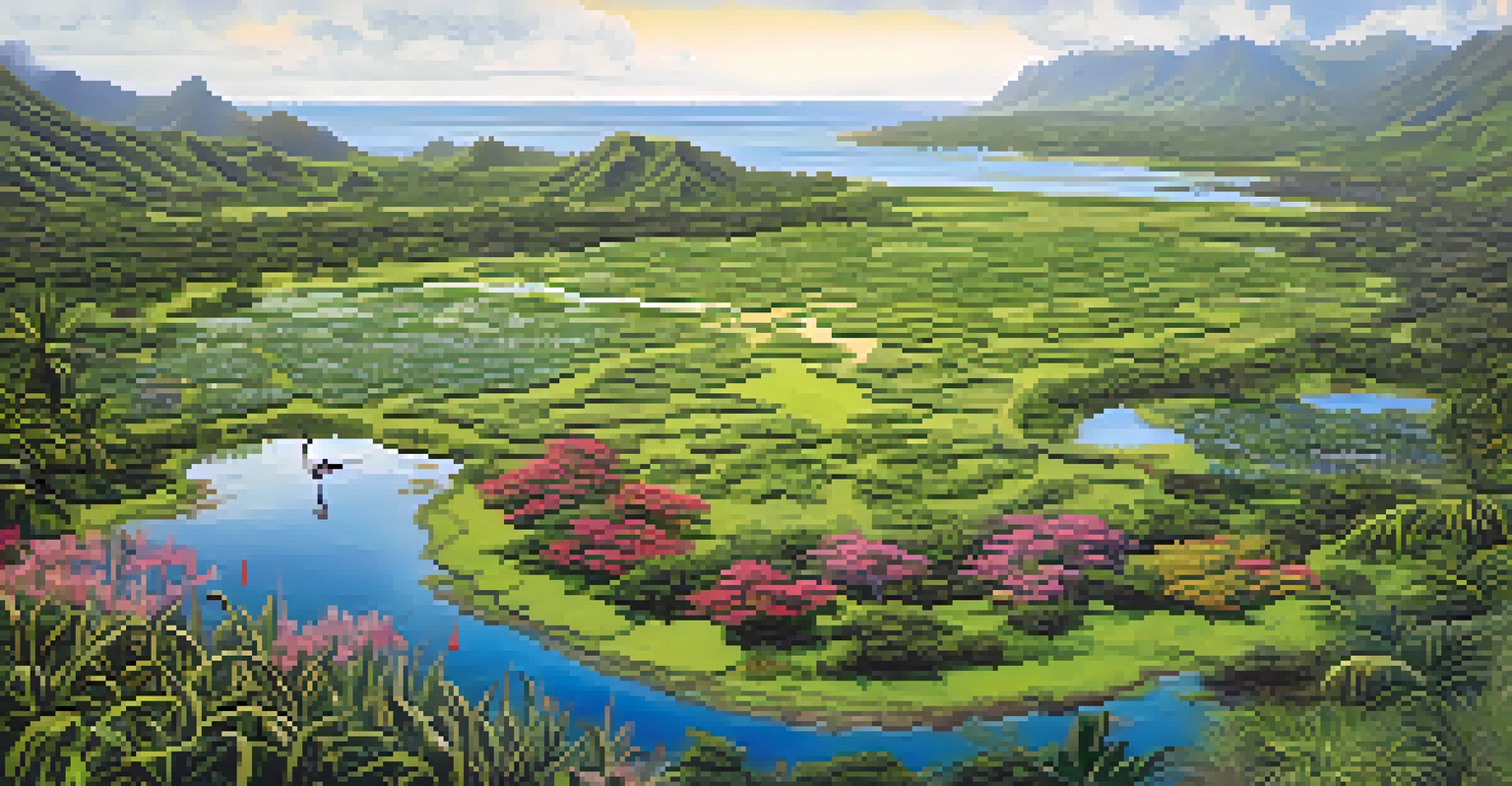Endangered Species in Hawaii: Challenges and Conservation

Understanding Hawaii's Unique Biodiversity
Hawaii is home to an incredible array of plant and animal species, many of which are found nowhere else on Earth. This unique biodiversity is a result of the islands' isolation and diverse ecosystems, ranging from lush rainforests to arid deserts. Sadly, this rich tapestry of life is under threat, with a significant number of species classified as endangered.
The greatest threat to our planet is the belief that someone else will save it.
The isolation of the islands has led to the evolution of specific species, such as the Hawaiian monk seal and the nene, or Hawaiian goose. However, this also makes them particularly vulnerable to changes in their environment and human activities. The loss of even one species can disrupt the delicate balance of Hawaii's ecosystems.
Understanding the unique characteristics of Hawaii's biodiversity is crucial for effective conservation efforts. Recognizing the importance of these species helps to foster a sense of responsibility and urgency in protecting them from extinction.
Major Threats to Endangered Species in Hawaii
Endangered species in Hawaii face a myriad of challenges, with habitat loss being one of the most pressing issues. Urban development, agriculture, and invasive species have all contributed to the degradation of natural habitats, leaving many native species without a home. This loss of habitat not only affects the animals and plants directly but also disrupts the ecosystems that depend on them.

Invasive species pose another significant threat, as they can outcompete native species for resources or introduce diseases. For example, the introduction of rats and mongoose has had devastating effects on ground-nesting birds in Hawaii. These invaders can decimate populations that have no natural defenses against them.
Hawaii's Biodiversity is Unique
The islands' isolation has led to a diverse array of species, many of which are endangered and found nowhere else on Earth.
Climate change adds another layer of complexity to these challenges, altering habitats and putting additional stress on vulnerable species. Rising sea levels, changing rainfall patterns, and increased temperatures can all have profound impacts on the delicate ecosystems of Hawaii.
Notable Endangered Species in Hawaii
Among the most notable endangered species in Hawaii is the Hawaiian monk seal, a marine mammal that has faced drastic population declines due to hunting, entanglement in fishing gear, and habitat loss. Conservation efforts have focused on habitat protection and removing threats, but their numbers remain critically low, highlighting the importance of continued support.
In nature's economy, the currency is not money; it is life.
Another iconic species is the nene, which is the state bird of Hawaii. Once nearly extinct, concerted conservation efforts have helped to increase their population, but they still face threats from habitat destruction and predation. Protecting the nene serves as a symbol of hope for successful conservation in the islands.
The Hawaiian silversword plant, known for its beautiful, spiky flowers, is also endangered due to habitat destruction and invasive species. These unique plants not only contribute to the biodiversity of the islands but also hold cultural significance for the native Hawaiian people.
Conservation Efforts in Hawaii
Conservation efforts in Hawaii are multifaceted, involving local communities, government agencies, and non-profit organizations. Programs aimed at habitat restoration play a crucial role in providing safe spaces for endangered species to thrive. By removing invasive species and replanting native flora, these efforts help restore the delicate balance of Hawaii's ecosystems.
Education and outreach initiatives are equally important, as they engage the community in conservation efforts. Raising awareness about the plight of endangered species fosters a sense of stewardship among residents and visitors alike. Through workshops, volunteer projects, and school programs, people are empowered to take action and make a difference.
Major Threats to Species Persist
Habitat loss, invasive species, and climate change pose significant challenges to the survival of Hawaii's endangered species.
Partnerships between various stakeholders have proven successful in addressing the challenges faced by endangered species. Collaborative efforts, such as the Pacific Islands Fish and Wildlife Office, work to implement recovery plans and monitor endangered populations, ensuring that these species have the best chance for survival.
The Role of Local Communities in Conservation
Local communities play a vital role in the conservation of Hawaii's endangered species. Their deep-rooted connection to the land and its resources encourages a sense of responsibility towards preserving the islands' unique biodiversity. Many community-led initiatives focus on protecting native species and restoring habitats, demonstrating the power of grassroots activism.
Community involvement can take many forms, from organizing beach clean-ups to advocating for sustainable practices. By participating in these activities, individuals not only contribute to the conservation of their environment but also help to cultivate a culture of conservation that can be passed down through generations. This local knowledge is invaluable in addressing the specific challenges faced by Hawaiian ecosystems.
Moreover, indigenous Hawaiian practices and beliefs are increasingly being integrated into modern conservation strategies. By respecting traditional ecological knowledge, conservationists can create more effective and culturally relevant solutions to protect endangered species.
The Importance of Policy and Legislation
Effective policy and legislation are critical components of conservation efforts in Hawaii. Laws such as the Endangered Species Act provide essential protections for endangered species and their habitats, ensuring that they receive the support needed to recover. These legal frameworks help to hold individuals and organizations accountable for their impact on the environment.
In addition to federal protections, local legislation can also play a significant role in conservation. For example, initiatives to regulate land use and development can help mitigate habitat loss and prioritize the preservation of critical ecosystems. Engaging policymakers in conversations about conservation raises awareness and encourages proactive measures to protect endangered species.
Community Involvement is Crucial
Local communities play a vital role in conservation by engaging in initiatives that protect native species and restore habitats.
However, policies must be backed by science and community input to be truly effective. Collaboration between scientists, policymakers, and local residents can lead to well-informed decisions that balance development and conservation needs, ensuring a sustainable future for Hawaii's rich biodiversity.
Future Directions for Conservation in Hawaii
Looking ahead, the future of endangered species in Hawaii depends on continued commitment to conservation efforts. This includes ongoing habitat restoration, research, and education initiatives that engage both residents and visitors. As awareness grows, so too does the potential for innovative solutions to emerge, driving positive change.
Emerging technologies, such as genetic research and drone monitoring, offer exciting possibilities for conservation in Hawaii. These advancements can enhance our understanding of species populations and their needs, aiding in the development of targeted recovery strategies. Embracing new tools and techniques can strengthen conservation efforts and boost the resilience of endangered species.

Ultimately, the future of Hawaii's endangered species lies in the hands of everyone who loves and values the islands. By fostering a collective commitment to conservation, we can ensure that these unique species not only survive but thrive for generations to come.